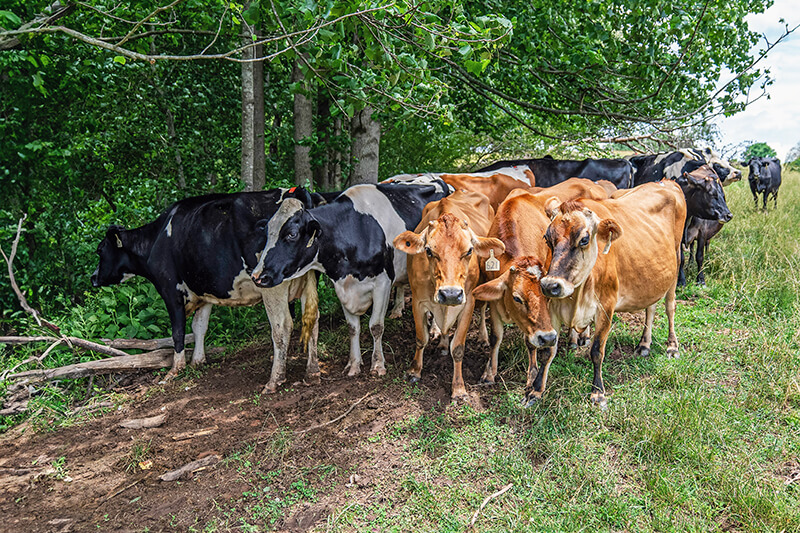Cowabunga! All About Dairy Breeds
Students explore breed characteristics and countries of origin for five different breeds of dairy cattle and discover why dairy farmers choose individual breeds for specific purposes.

Background
Lesson Activities
Recommended Companion Resources
Credits
Author
Mandi Bottoms | California Foundation for Agriculture in the Classroom
Acknowledgements
This lesson was funded in 2008 by the California Milk Advisory Board and the California Farm Bureau Federation. To meet the needs of California educators, Milk Matters: Discovering Dairy was created to meet the Curriculum Content Standards for California Public Schools. The unit also includes a collection of relevant resources about the dairy industry.
Executive Director: Judy Culbertson
Layout and Design: Imelda Muziom
Standards
Indiana Content Area Standards
-
English Language Arts.Grade 3.RL.1
Read and comprehend a variety of literature within a range of complexity appropriate for grades 2-3. By the end of grade 3, students interact with texts proficiently and independently.
- Key Ideas and Textual Support.3.RL.2.1: Ask and answer questions to demonstrate understanding of a text, referring explicitly to the text as the basis for the answers.
-
English Language Arts.Grade 3.SL.1
Listen actively and adjust the use of spoken language (e.g., conventions, style, vocabulary) to communicate effectively with a variety of audiences and for different purposes.
- Discussion and Collaboration.3.SL.2.1: Engage effectively in a range of collaborative discussions (one-on-one, in groups, and teacher-led) on grade- appropriate topics and texts, building on others ideas and expressing personal ideas clearly.
-
English Language Arts.Grade 4.RL.1
Read and comprehend a variety of literature within a range of complexity appropriate for grades 4-5. By the end of grade 4, students interact with texts proficiently and independently at the low end of the range and with scaffolding as needed at the high end.
- Key Ideas and Textual Support.4.RL.2.1: Refer to details and examples in a text when explaining what a text says explicitly and when drawing inferences from the text.
-
English Language Arts.Grade 4.SL.1
Listen actively and adjust the use of spoken language (e.g., conventions, style, vocabulary) to communicate effectively with a variety of audiences and for different purposes.
- Comprehension.4.SL.3.1: Summarize major ideas and supportive evidence from text read aloud or information presented in diverse media and formats, including visually, quantitatively, and orally.
- Discussion and Collaboration.4.SL.2.1: Engage effectively in a range of collaborative discussions (one-on-one, in groups, and teacher-led) on grade- appropriate topics and texts, building on others ideas and expressing personal ideas clearly.
-
English Language Arts.Grade 5.RL.1
Read and comprehend a variety of literature within a range of complexity appropriate for grades 4-5. By the end of grade 5, students interact with texts proficiently and independently.
- Key Ideas and Textual Support.5.RL.2.1: Quote accurately from a text when explaining what a text says explicitly and when drawing inferences from the text.
-
English Language Arts.Grade 5.SL.1
Listen actively and adjust the use of spoken language (e.g., conventions, style, vocabulary) to communicate effectively with a variety of audiences and for different purposes.
- Comprehension.5.SL.3.1: Orally summarize or respond to a written text read aloud or information presented in diverse media and formats, including visually, quantitatively, and orally.
- Discussion and Collaboration.5.SL.2.1: Engage effectively in a range of collaborative discussions (one-on-one, in groups, and teacher-led) on grade- appropriate topics and texts, building on others ideas and expressing personal ideas clearly.